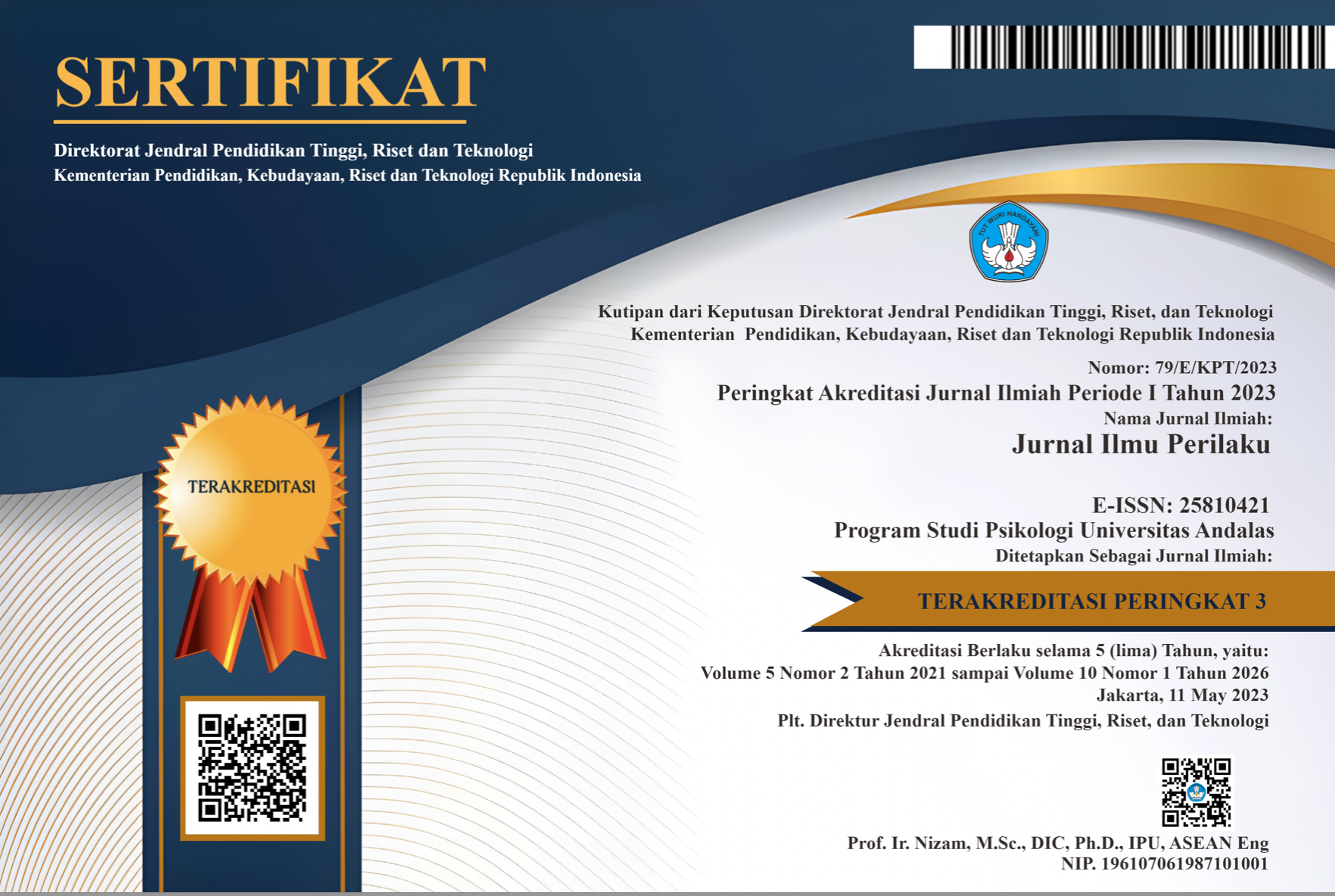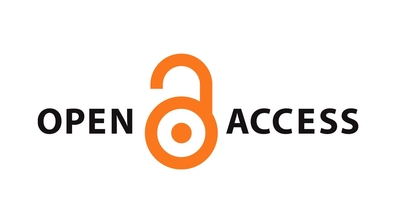Perlukah Kesehatan Mental Remaja? Menyelisik Peranan Regulasi Emosi dan Dukungan Sosial Teman Sebaya Dalam Diri Remaja
Abstract
. Mental health is an important issue related to adolescent in their life. One of activitiy done by adolescent to spend their free time both at home and at school is to play with friends. In addition, friends factor becomes one of the strengthening factors in adolescent mental health. This study aims to determine the role of emotional regulation and peers social support toward mental health. This research was conducted on 102 students from Senior High School Yogyakarta, varying from 15 – 18 years old. Data was collected using teacher’s role interview, teacher’s role questionnaire, Mental Health Scale (Y), Emotional Regulation (X1) scale, and Peers Social Support (X2) scale. Data was analyzed using Anova and multiple regression analysis. The results showed that there was a strong relationship (F = 66,628; p < 0,01) between emotional regulation and peers social support toward mental health. Based on the analysis of determination, obtained R2 of 0,574 or 57,4%. This shows that the percentage of contributions, both independent to dependent variables is equal to 57,4%. Further analysis is needed to find out the impact of emotional regulation and peers social support in improving mental health literacy.
Downloads
References
Berns, R.M. (2004). 6th Edition: Child, Family, School, Community: Socialization and Support. California: Thomson-Wadsworth.
Christner, R.W. & Mennuti, R.B. (2009). School-Based Mental Health. New York: Routledge.
Cohen, S. & Syme, S.L. (1985). Social Support and Health. San Fransisco: Academic Press.
Coleman, M., & Vaughn, S. (2000). Reading interventions for students with emotional/behavioral disorders. New York: Columbia University TeenScreen Program.
Gross, J.J. & Munoz, R.F. (1995). Emotion Regulation and Mental Health. American Psychological Association D12. http://spl.stanford.edu/pdfs/1995%20Clinical%20Psychology%20Science%20and%20Practice%20-%20Emo.%20Reg.%20and%20Mental%20Health.pdf tanggal 30 Agustus 2017.
Gross, J. J. & Thompson, R. A. (2007). Emotion regulation: Conceptual foundations.In J. J. Gross (Ed.), Handbook of emotion regulation. New York: Guilford Press
Gunarsa, S.D. & Gunarsa, Y.S. (1983). Psikologi Perkembangan Anak dan Remaja. Jakarta: PT. BPK Gunung Mulia.
Hayes, J. R. (2000). A New Framework for Understanding Cognition and. Perspectives on writing: Research, theory, and practice, 6.
Kumara, A. (2012). Permasalahan Kesehatan Mental Remaja di DIY. (Laporan Penelitian tidak dipublikasikan). Fakultas Psikologi Universitas Gadjah Mada, Yogyakarta.
Lervolino, A. C., Pike, A., Manke, B., Reiss, D., Hetherington, E. M., & Plomin, R. (2002). Genetic and environmental influences in adolescent peer socialization: Evidence from two genetically sensitive designs. Child development, 73(1), 162-174.
McGrath, B., Brennan, M. A. Dolan, P., & Barnett, R. (2009). Adolescent well-being and supporting contexts : A comparison of adolescents in Ireland and Florida. Journal of Community and Applied Social Psychology, 19, 299-320.
Mental Health Foundation (MHF). (2001). http://www.mentalhealth.org.uk/help-information/an-introduction-to-mental-health/what-is-mental-health/ tanggal 5 September 2017.
Monks, F.J., Knoers, A.M.P., Haditono, S.R. (2009). Psikologi Perkembangan: Pengantar dalam Berbagai Bagiannya. Yogyakarta: Gadjah Mada University Press.
Moos, R. H. (2002). Life Stressors, Social Resources, and Coping Skills in Youth: Applications to Adolescents With Chronic Disorders. Journal of Adolescent Health, 30 (4), 22-29.
Passer, M. & Smith, R. (2007) Psychology; The science of mind and behavior. New York: McGraw-Hill.
Prever, M. (2006). Mental Health in Schools. London: Paul Chapman Publishing.
Priyatno, D. (2008). Mandiri belajar SPSS. Jakarta: Mediakom.
Puspitasari, Y.P., Abidin, Z., Sawitri, D.R. (2010). Hubungan antara Dukungan Sosial Teman Sebaya terhadap Kecemasan Menjelang Ujian Nasional (UN) pada Siswa Kelas XII Reguler SMA Negeri 1 Surakarta. SKRIPSI. http://eprints.undip.ac.id/24776/ tanggal 20 Juli 2017
Rice, F. P., & Dolgin, K. G. (2002). The Adolescent Development, Relationships, and Culture. Boston: Allyn & Bacon.
Roeser, R.W., Eccles, J.S., Sameroff, A.J. (1998). Academic and emotional functioning in early adolescence: Longitudinal relations, patterns, and prediction by experience in middle school. Development and Psychopathology, 10, 321–352.
Santrock, J.W. (2011). Life-Span Development:13th Edition. New York: McGraw-Hill.
Saxena, P., Dubey, A., & Pandey, R. (2011). Role of Emotion Regulation Difficulties in Predicting Mental Health and Well-being. SIS J. Proj. Psy. & Mental Health 18: 147-155.
Shahzad, A., Ahmed, T., Jaffari, S.I.A., Khilji, B.A. (2012). Impact Of Self Esteem & Support On Student Performance. Journal Management & Marketing, Vol. 10, Issue 2, pp. 352-358.
Skalski, A. K. & Smith, M.J. (2006). Responding to the mental health needs of students. Principal Leadership, 12 – 15.
Smet, B. (1994). Psikologi Kesehatan. Jakarta : PT Gramedia Widiasarna Indonesia
Story, M. & Stang, J. (2005) Nutrition needs of adolescents. In: Stang, J. and Story, M., Eds., Guidelines for Adolescent Nutrition Services, University of Minnesota, Minneapolis, 21-34.
Tahmasbipour, N. & Taheri, A. A. (2012). Survey on the relation between social support and mental health in students Shahid Rajaee University. ELSEVIER Procedia – Social and Behavioral Sciences 2012 Vol: 47, Hal: 5-9.
Thompson, R. A., & Meyer, S. (2007). Socialization of Emotion Regulation in the Family. In J. J. Gross, Handbook of Emotion Regulation (pp. 249-269). New York: Guilford Press.
Whitlock, J. & Schantz, K. (2008). Mental Illness and Mental Health. ACT for Youth Center of Excellence: Research Facts and Findings.
World Health Organization (WHO). (2011). http://www.who.int/features/qa/62/en/ tanggal 17 Juni 2017.
The non-commercial use of the article is governed by the Creative Commons Attribution license as currently displayed on Creative Commons Attribution-NonCommercial-ShareAlike 4.0 International License.
JIP's spirit is to disseminate articles published are as free as possible. Under the Creative Commons license, JIP permits users to copy, distribute, display, and perform the work for non-commercial purposes only. Users will also need to attribute authors and JIP on distributing works in the journal.
Please find the rights and licenses in Jurnal Ilmu Perilaku (JIP).
- License
The non-commercial use of the article will be governed by the Creative Commons Attribution license as currently displayed on Creative Commons Attribution-NonCommercial-ShareAlike 4.0 International License.
- Author’s Warranties
The author warrants that the article is original, written by stated author(s), has not been published before, contains no unlawful statements, does not infringe the rights of others, is subject to copyright that is vested exclusively in the author and free of any third party rights, and that any necessary written permissions to quote from other sources have been obtained by the author(s).
- User Rights
JIP's spirit is to disseminate articles published are as free as possible. Under the Creative Commons license, JIP permits users to copy, distribute, display, and perform the work for non-commercial purposes only. Users will also need to attribute authors and JIP on distributing works in the journal.
- Rights of Authors
Authors retain the following rights:
- Copyright, and other proprietary rights relating to the article, such as patent rights,
- The right to use the substance of the article in future own works, including lectures and books,
- The right to reproduce the article for own purposes, provided the copies are not offered for sale,
- The right to self-archive the article.
- Co-Authorship
If the article was jointly prepared by other authors, the signatory of this form warrants that he/she has been authorized by all co-authors to sign this agreement on their behalf, and agrees to inform his/her co-authors of the terms of this agreement.
- Termination
This agreement can be terminated by the author or JIP upon two months’ notice where the other party has materially breached this agreement and failed to remedy such breach within a month of being given the terminating party’s notice requesting such breach to be remedied. No breach or violation of this agreement will cause this agreement or any license granted in it to terminate automatically or affect the definition of JIP.
- Royalties
This agreement entitles the author to no royalties or other fees. To such extent as legally permissible, the author waives his or her right to collect royalties relative to the article in respect of any use of the article by JIP or its sublicensee.
- Miscellaneous
JIP will publish the article (or have it published) in the journal if the article’s editorial process is successfully completed and JIP or its sublicensee has become obligated to have the article published. JIP may conform the article to a style of punctuation, spelling, capitalization, referencing and usage that it deems appropriate. The author acknowledges that the article may be published so that it will be publicly accessible and such access will be free of charge for the readers.










